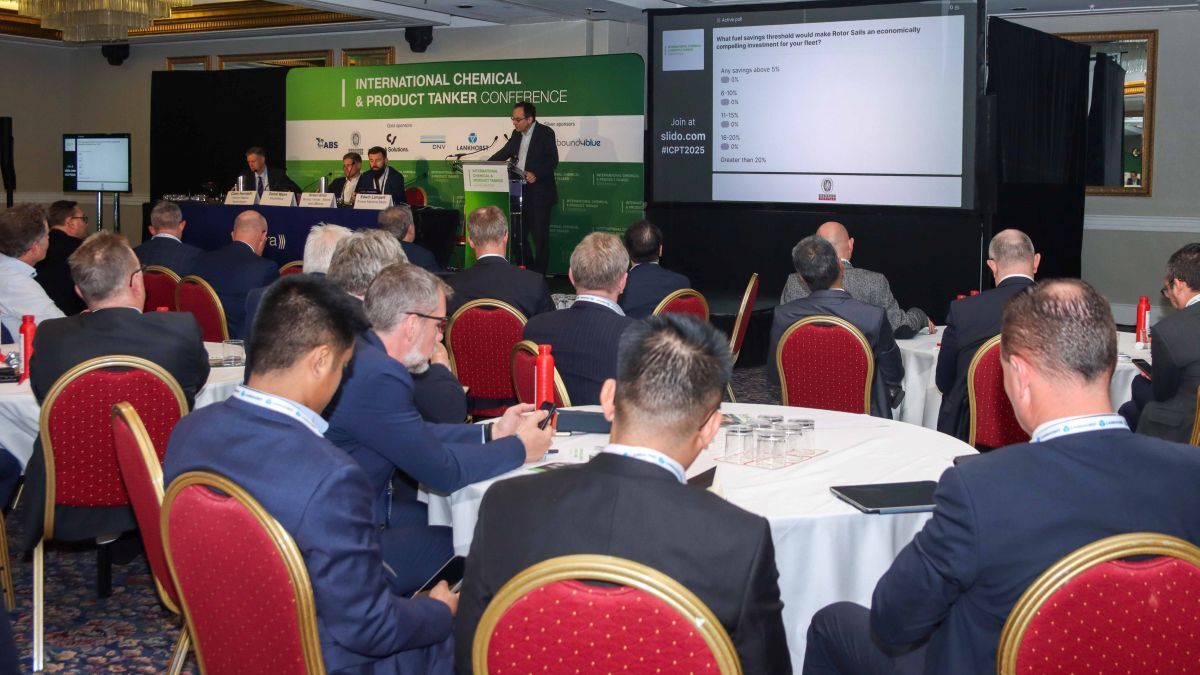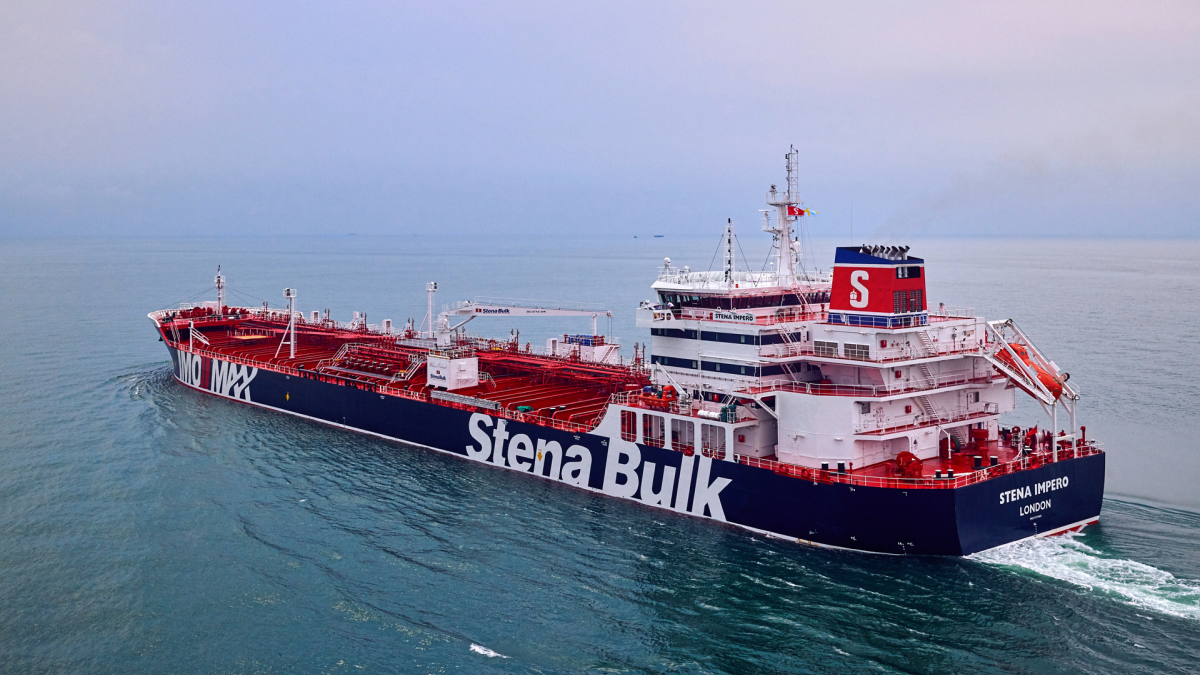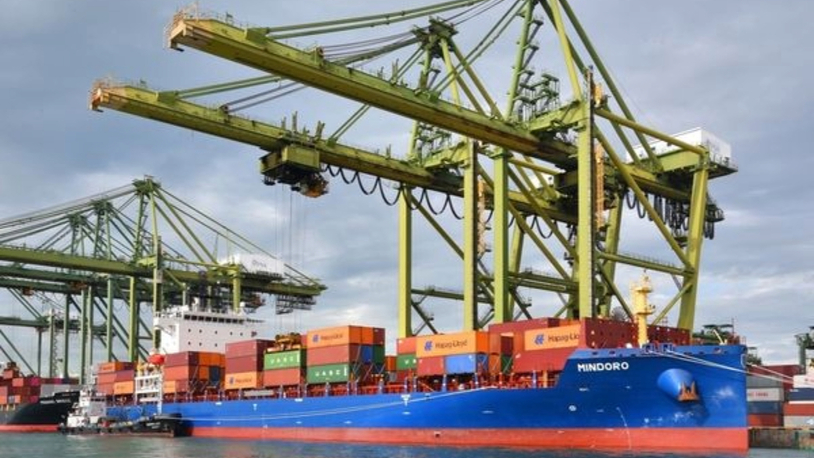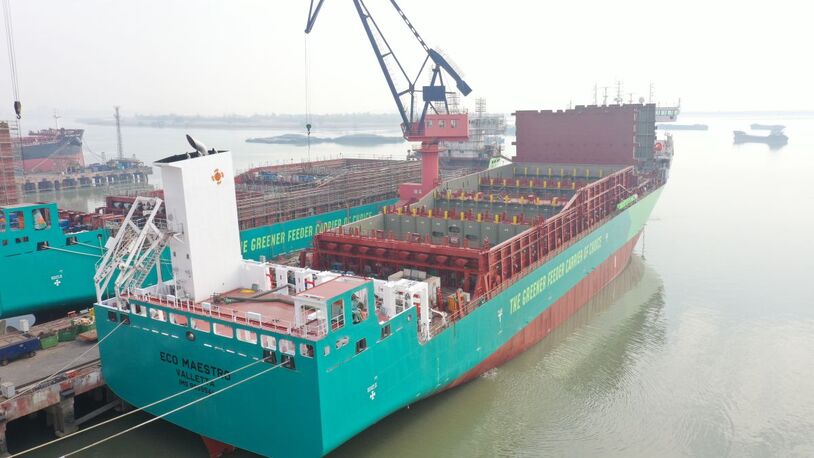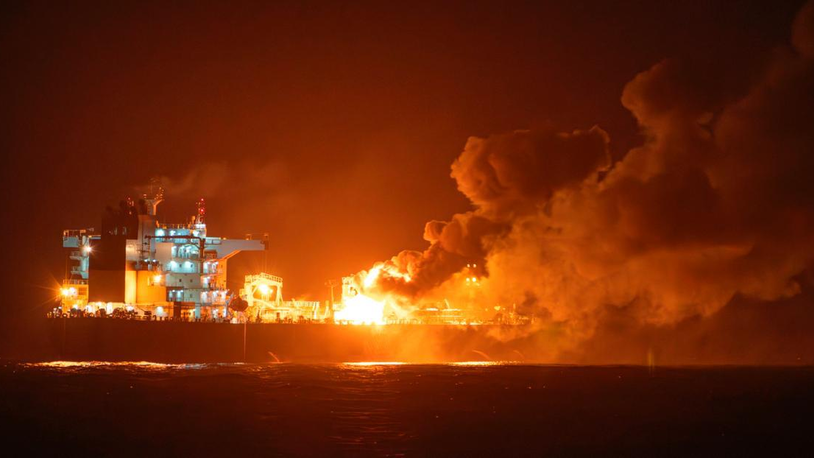Business Sectors
Events
Contents
Straddling the market
A stack based on straddle carrier operation allows the transportation of containers between quay and stack, and operations within the stack itself. Cargotec, which owns the Kalmar brand of straddle carriers, maintains that this kind of operation may be the best choice for medium-sized terminals handling between 100,000 and 4 million teu a year. Cargotec recently launched the seventh generation of the Kalmar straddle carrier family.
However, the trend in recent years has been to bypass the ‘strad’ in favour of automated stacking cranes (ASCs) as the cost of automation has declined. Smaller terminals will, in most cases, still benefit from using reach stackers for managing the yard-quay interface.
While new terminals based on straddle carrier operations occasionally come on stream, the market is largely confined to the replacement of, or additions to, an existing fleet and configuration. Even then, some terminals that were originally established for straddle carrier operation are now migrating to rubber tyred gantrys (RTGs).
Typical of the trend towards replacement and upgrading is the recent Terex Port Solutions order placed by Hutchison Port Holdings subsidiary Freeport Container Port (FCP) in the Bahamas. This is for 10 straddle carriers with an option to purchase an additional 12 machines. Twenty five diesel-hydraulic Terex NSC 644 H straddle carriers are already in use in the FCP terminal.
The new Terex NSC 634 E ECO straddle carriers are now in operation at the FCP terminal on Grand Bahama. Each machine can stack 9ft 6ins high-cube containers one-over-two, enabling high handling rates. Each also has lifting capacities of up to 60 tonnes under spreader and can travel at up to 30 kph. The strads feature a hybrid drive system consisting of both a diesel-powered generator and electrostatic short-term storage media.
Terex Port Solutions diesel-electric sprinter carriers were also chosen by Global Container Terminals (GCT) for its terminal in New Jersey, USA. Terex will supply 17 NSC 624 E machines to the terminal located in Bayonne. GCT ordered the sprinter carriers to support the expansion of the terminal by its subsidiary Global Terminal & Container Services. By the end of this year, the length of the quay will have been extended from 548m to 822m. To increase efficiency and flexibility, the one-over-one carriers can travel at up to 32 kph and are equipped with a twin-lift spreader, enabling them to move 20ft, 40ft and 45ft containers up to a maximum load of 60 tonnes under spreader. The machines can lift and deposit two 20ft containers separately and stack one high-cube container on another.
In the view of Guido Luini, managing director of the Terex facility in Würzburg, Germany, the fact that GCT opted for his company was particularly satisfying. “GCT is one of the big four container terminal operators in North America and has locations both on the Atlantic and on the Pacific coast.” According to Mr Luini, the strong demand for Terex sprinter and straddle carriers is due to their being recognised throughout the market as reliable, high-performance machines. “The tried-and-tested diesel-electric drive system we use provides low-consumption operation as well as reduced exhaust gas and noise emissions. We were the first company to introduce these machines to the market in 2001 and there are now over 850 of them in use worldwide.”
Cargotec secured an order this year for 14 Kalmar straddle carriers from UK-based Forth Ports as part of a major investment and upgrade programme at its London Container Terminal in Tilbury.
Forth Ports is investing in substantial equipment and site upgrades to London Container Terminal, which was already a straddle carrier operation. It is also integrating the terminal with the Tilbury shortsea facility and part of the investment plan is the purchase of the 14 new Kalmar ESC 450W straddle carriers.
London Container Terminal handles in excess of half a million containers a year and is the only UK port servicing both deepsea and shortsea customers. It is located on the Thames and is a key shipping and distribution location with access to London and the south east.
Ismo Leppänen, managing director of Cargotec UK, said that the order will allow the terminal to become totally integrated across its shortsea and deepsea operations with regards to its straddle fleet. “This delivery, scheduled for April next year, will further increase the number of Kalmar carriers at the terminal at what is an exciting development time for London Container Terminal,” he said.
The Kalmar ESC 450W 7+ generation of straddle carriers is claimed to combine high performance and productivity with low maintenance and operating costs. The machines are equipped with Kalmar’s standard W-type front cabin complete for container handling, with 4-high stacking and 50-tonne load capacity.
Konecranes is to deliver five straddle carriers as part of an agreement for different items of container handling equipment with Indonesian state-owned terminal operator PT Pelabuhan Indonesia III (Pelindo III). The order includes 10 ship-to-shore cranes and 20 automated stacking cranes. Delivery is scheduled for 2014 and 2016. Although the value of the order has not been disclosed, Konecranes says it amounts to more than €100 million.
The government of Indonesia has introduced a nationwide freight transport initiative to improve the movement of goods through the country’s vast waterways network. As part of this programme Pelindo III will construct a new terminal at Lamong Bay in Surabaya, East Java, with a planned inauguration in 2014.
Indonesia is a strategically important market for Konecranes, which has been operating in the country for 15 years. The country is large, having a population of more than 240 million people, and is growing rapidly. It is also the world’s largest archipelago and has fast-growing provincial economies, so its ports are crucial to international, regional and domestic trade.
Lyttelton Port of Christchurch (LPC), New Zealand, is strengthening its strad fleet by investing in a further four diesel-electric machines to increase the capacity of its current fleet from 18 to 22. The order was also booked with a fourth ship-to-shore (STS) gantry crane to handle growing container volumes at the port as part of a deal with Liebherr Container Cranes.
Liebherr is a relatively recent entrant to the straddle carrier market. Better known for its STS cranes, reach stackers and mobile harbour cranes, Liebherr seems to have reached the conclusion that it pays to have as full a range of solutions as possible, as terminals and their parent groups look to deal with just a single hardware supplier.
For the current financial year, LPC expects volumes of 350,000 teu which would represent a record, surpassing last year’s total of 330,000 teu. The port continues to grow with the on-going expansion of Canterbury, one of New Zealand’s strongest regional economies. Commodity exports, such as dry and reefer dairy produce, and frozen meat and vegetables, are forecast to keep rising. Imports are also rising, and are tipped to continue their upwards path over the long term as Christchurch rebuilds itself after the 2010-2011 earthquakes.
The total value of the contract with Liebherr is put at over NZ$16 million (US$12.8 million). Delivery is expected in the latter half of 2014 and is timed to coincide with the Cashin Quay berth reinstatement programme and development work for the terminal. CST
Related to this Story
Events
Maritime Environmental Protection Webinar Week
The illusion of safety: what we're getting wrong about crews, tech, and fatigue
Responsible Ship Recycling Forum 2025
© 2024 Riviera Maritime Media Ltd.



